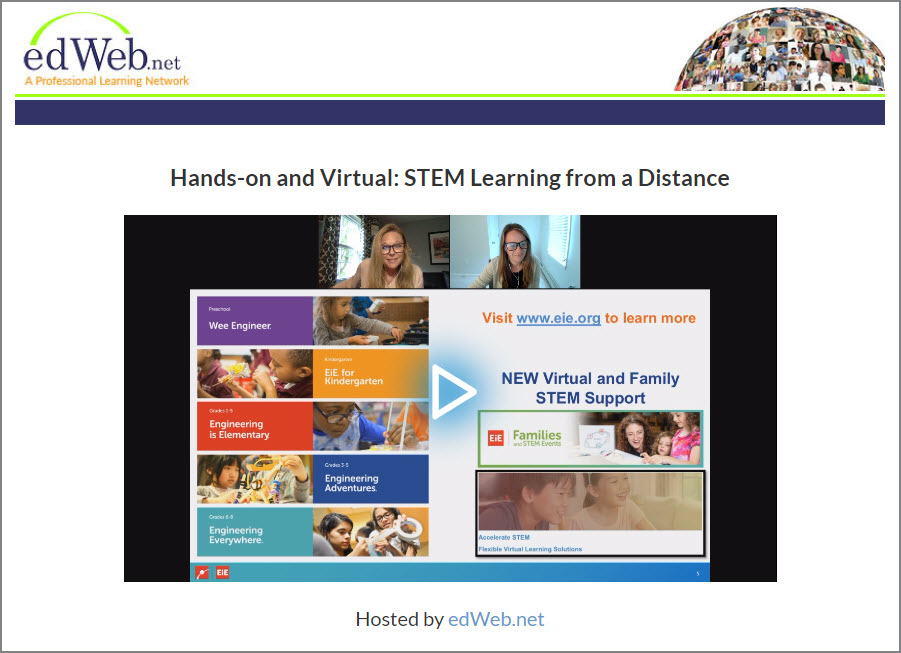At EiE, we know you need more than a basic curriculum to meet the diverse needs and interests of your students. That’s why we’ve developed our Computer Science Essentials units for grades 1-5. Bring together engineering, science, computer science and math with units specially designed for maximum impact.
EiE Research Results | Virtual Learning | Friday, August 28
Teaching and Learning in COVID Times: Survey Results
In May, the EiE Research Team launched a comprehensive survey to over 9,000 parents and educators across the country. Our goal was to better understand how teaching and learning have been impacted so that we can respond with high quality STEM resources that meet the unique needs of this moment.
EiE Resources for Teachers | EiE Teaching Tips | EiE Research Results | Implementing EiE | Wednesday, June 24
Seven Key Considerations for Hands-on and Virtual STEM Learning
On June 23rd, members of our leadership team, Jill Olson and Heather Gunsallus, hosted an incredible webinar for STEM educators on edWeb. Their presentation, Hands-on and Virtual: STEM Learning from a Distance, covered some of our ongoing research on the impact of hands-on learning for students in science, technology, engineering and mathematics, as well as examples for adapting STEM topics for distance learning.
EiE Research Results | Thursday, August 31
Research Spotlight: Engineering Notebooks Make Learning More Engaging
| This is just some of the data we’ve collected! |
Engineering is Elementary is conducting a major research study to explore the question, “What makes an elementary engineering curriculum effective?” We’ve collected mountains of data from thousands of elementary students in hundreds of classrooms . . . and the information is helping us answer more than just this one question!
For example, we’re looking at how engineering notebooks can make learning more engaging. EiE researcher Jonathan Hertel presented some findings at the annual American Society for Engineering Education conference in New Orleans, and recently co-authored an article entitled "The Roles of Engineering Notebooks in Shaping Elementary Engineering Student Discourse and Practice" in the International Journal of Science Education.
EiE Research Results | Tuesday, October 18
EiE Releases Guide to Learning Trajectories for K-8 Engineering
Understanding How Kids Learn
The new learning trajectories draw on EiE’s extensive research on “how children learn engineering.” “Kids who are twelve have different skills and abilities than kids who are three,” says EiE director Christine Cunningham. “That may seem obvious, but it’s easy to overlook.”












